| Featured Students: Susanna Abler | Ayah Aligabi | Chantal Nica Anicoche | Madeline Arbutus | Courtney Arrington | Laura-Catherine Bando | Francesca Burton | Dylan Chao | Viridiana Colosio-Martinez | Christina Dee | Kwame Dodiar | Devon Fick | Joshua Gray | Elyssa Kristine Marie Granados Lou | Kayla Massey | Evan McRae | Ahmad Ndir | Ashley Pereira | Bee Possidente | Roshnee Roberts | Giuliana Weiss | |
|
|
|
|
 Susanna Abler When it comes to functionality, much progress has been made in mechanical and bionic prosthetic limb capabilities but less work has been done in improving the available cosmetic options for amputees. Individuals who have limb deficiencies found that they often experienced distress or a disconnect with their prosthetic limb due to its appearance and some eventually abandoned their limbs due to this disconnect (Sansoni, 2015). This research project showed how the involvement of the amputee in the cosmetic design of their limb influenced how they perceive their limb and gave it a renewed purpose outside of mechanical constraints of function, which emphasized the need for co-designing in assistive technology. Five lower-limb amputees were interviewed for a case study regarding their personal cosmetic desires for their limbs. Data from these interviews shows a variety of aesthetic interests as well as a varied understanding of what is available cosmetically for lower-limb prosthetics. This work was funded, in part, by the UMBC Designing Participatory Futures Lab. |
|
|
|
|
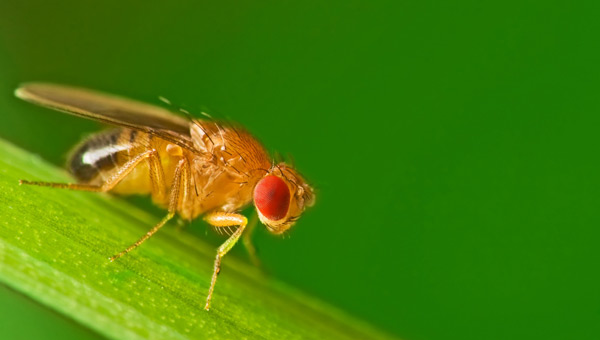 Ayah Aligabi Neurodegeneration is often developed later in life with very few predictors that can allow us to prepare for its onset. Numerous studies have identified a connection between neurodegeneration and age-specific changes in the immune system however the details underlying this connection are not clear. Retrospective analysis of data from previous research identified nmnant as a candidate gene due to its role in neuronal protection and promotion of infection clearance on flies at older age. This experiment aims to validate the findings of the previous study and determine if nmnat plays a role in clearing bacterial infection with age. To do so, the expression of nmnat was knocked down using RNA interference (RNAi), then one- and five-week old flies were injected with an E.coli solution. Flies were given 24-hours to clear the infection, and the surviving flies were individually homogenized, and the homogenate plated. After incubation, colony count was used to assess the flie’s ability to clear the infection. Knockdown of the gene was confirmed utilizing qPCR analysis. Findings of this study could inspire future multidisciplinary research in efforts to discover new ways to prevent or treat neurodegenerative diseases. This work was funded, in part, through an Undergraduate Research Award from the UMBC Division of Undergraduate Academic Affairs. |
|
|
|
|
 Ti Sao Mi Ditoy: A Snapshot of the Philippine Diaspora Chantal Nica Anicoche Ti Sao Mi Ditoy (What I Say Here) is a multi-media art magazine created by Chantal Anicoche, inspired by the cultural renaissance within the Philippine diaspora that is exploring aspects of pre-colonial life and identity. A longing to understand who we are and where we came from manifests through our writing when our voices are not otherwise being heard. That same yearning also manifests through the efforts of Philippine activism, striving to become organized, in hopes of ending injustices back home. Through a collection of submitted visual expressions, poetry, and prose, this zine pieces together the shared experiences from a community which has otherwise been fractured by generations of war, forced migration, and exploitative capitalism. This zine’s purpose is to provide space for a range of Filipino perspectives, each telling a unique story amidst the diverse political and social ideals within Filipino culture. Ti Sao Mi Ditoy (What I Say Here), is an assertion of these feelings through print media. This work was funded, in part, through an Undergraduate Research Award from the UMBC Division of Undergraduate Academic Affairs. |
|
|
|
|
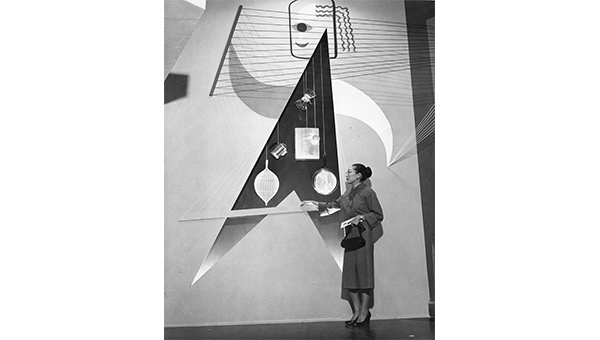 Madeline Arbutus Alma Shon, a mid-twentieth century American design professional of Korean descent, created bespoke gift wraps as Director of Design at Neiman Marcus, a Dallas, Texas luxury department store. Newspapers and memoirs celebrated her work, noted as “copied all over the nation” and “too pretty to open.” Yet, Shon remains unknown to contemporary design professionals. Archives that conserve Neiman Marcus packages either list the gift wrap designer as “unknown” or omit this credit altogether. By comparing the visual language of credited Shon designs to uncredited packages, I identified Neiman Marcus gift wraps created by Shon or under her direction. Through the analysis of these packages, archived correspondences, and familial memory, this research weaves together a record of Shon’s design career and personal history and questions how value is assigned to the cultural productions of female designers. This research, which challenges design history’s existing conditions for inclusion, culminated in the first monograph discussing Shon’s life and work. This work was funded, in part, through an Undergraduate Research Award from the UMBC Division of Undergraduate Academic Affairs. |
|
|
|
|
 Courtney Arrington Many children diagnosed with autism spectrum disorder (ASD) have delayed academic and language skills. Behavior analytic intervention typically involves teaching a predetermined number of skills at a time to remedy the aforementioned academic and language delays. The purpose of this study is to determine the optimal instructional arrangement for preschoolers diagnosed with ASD. We taught participants to label things in the environment under three conditions: (a) three concurrently taught labels (set size three), (b) six concurrently taught labels (set size 6), and (c) 12 concurrently taught labels (set size 12). We collected data on the duration of training, percentage of correct responses, and number of incorrect responses during language training per condition. Our study is underway; however, previous research suggests that set size 3 and 12 may be the optimal sets for learning. The outcomes of this study will inform the selection of most effective and efficient instructional arrangements for children with ASD. This work was funded, in part, through an Undergraduate Research Award from the UMBC Division of Undergraduate Academic Affairs. |
|
|
|
|
 Laura-Catherine Bando According to the National Center of Health Statistics (2019), approximately 1.3 million older adults live in nursing homes in the US. Nursing homes, or skilled nursing facilities, provide 24/7 medical care for those who need short term rehabilitation and those for whom the nursing home is their permanent home due to their level of health needs (National Institute on Aging, 2017). With many residents residing for a decade or more in the same community, relationships form between staff and residents (Ådland et al., 2021). Consequently, feelings of extreme grief and distress may be expressed by staff when residents pass away and the repetition of loss can take a major toll on mental well being, due to a lack opportunity to step back and grieve (Ådland et al.,2021). A review of the literature exploring the impact of grief and loss, following the passing of nursing home residents, on the staff who care for them will be provided. Recommendations for practice will be made and a strategy presented that can be implemented within the long term healthcare field to support formal caregivers when coping with the loss of residents with who they may have formed deep connections. |
|
|
|
|
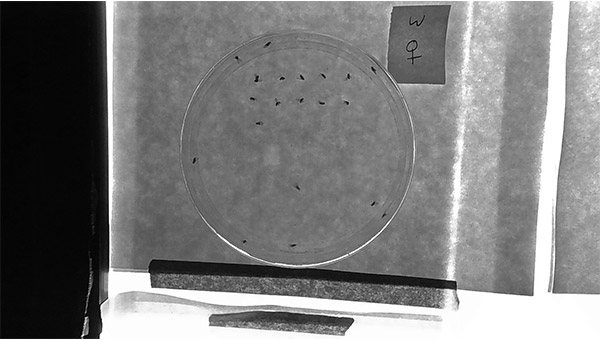 Francesca Burton, Eva Stanley, Danielle Wilson Autism and schizophrenia are neurological disorders known to share numerous similarities at the anatomical and behavioral levels. For example, both disorders are associated with deficient mechanisms underlying synaptic refinement, which is a process that regulates precise connectivity within neuronal networks. At the behavioral level, one of the most notable characteristics of autism is low sociability. By contrast, schizophrenia is a chronic neuropsychiatric condition impacting an individual’s ability to interpret and experience reality. Current animal models attempt to replicate deficits and symptoms experienced by human patients, representing a challenging task due to the complexity of the disorders. Here, we review behavioral assays previously used to study both disorders. For genes associated with autism, we will assess the effects of gene misregulation on sociability using a fruit fly model. We will compare the social patterns of control flies to those of flies with genetic manipulations of autism candidate genes. Our goals are to determine which candidate genes have an effect on social patterns and to develop models to study representative phenotypes associated with both disorders. Overall, developing accurate and predictive animal models may be critical for furthering our understanding of the disorder’s origin and pathology, as well as developing effective treatments. |
|
|
|
|
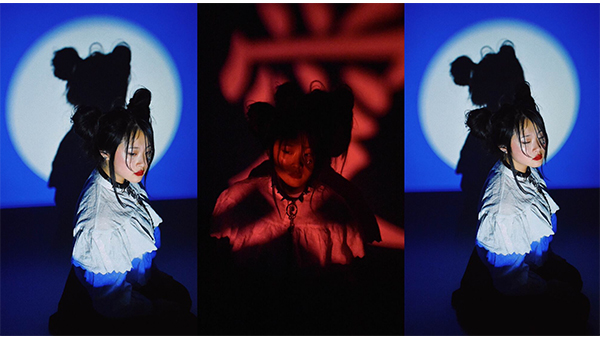 Dylan Chao Photography is one of the most powerful mediums of art, because of its ability to showcase the world through an artist’s eyes. Despite this, however, in western media only a select group of voices are pushed to the forefront. Unfortunately these selections tend to favor white voices while discounting those of minorities. This marginalization extends beyond the art world and bleeds into other communities as well. Growing up as a queer Asian individual, I was often excluded from multiple communities I identified with and felt my voice was not worthy or deserving of being heard. Compelled by this, this series of photographs explores the expression of gender, my identity as a queer Asian individual, as well as the unique Asian American experience. I hope that this project inspires and empowers others to live unafraid and unapologetically. This work was funded, in part, by UMBC LGBTQ+ Faculty and Staff Association. |
|
|
|
|
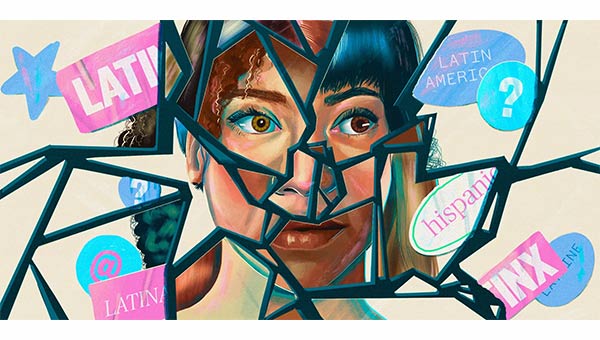 Viridiana Colosio-Martinez Latinx cultural identity is constantly under pressure to be one feature at home and within the community, but to be something else outside. One difficulty faced by Latinx individuals when embracing bilingualism as their cultural identity is the stigmatization and stereotyping of being gangbangers, minimum wage workers, and hypersexualized femme fatale as part of their Latinx authenticity. Commonly, the Latinx cultural identity is generalized as only one culture. Many Latinxs have to constantly prove their English competency at school or at their workplace, living in fear and with anxiety to be replaced by their monolingual or bilingual peers that have no accent and sound more American. There is a misconception supporting the idea that learning more than one language affects developmental milestones in children. Therefore, some educators will suggest to Latinx families avoiding teaching their children their native language because this will affect their acquisition of standard English and ultimately affect their school performance. Translanguaging when speaking both languages is preferred by Latinxs because they identify their bilingualism as one repertory that uses either language depending on the need. This study may be relevant for the inclusion of bilingual individuals not only within UMBC but also in a globalized world. This work was funded, in part, through an Undergraduate Research Award from the UMBC Division of Undergraduate Academic Affairs. |
|
|
|
|
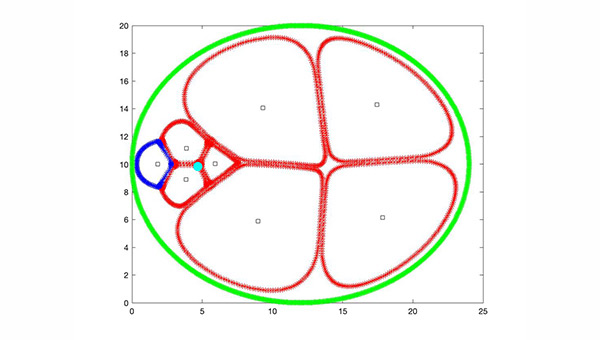 Christina Dee This research centers on simulation of a cluster of migratory cells among nurse cells toward the oocyte in the egg chamber of Drosophila melanogaster in MATLAB. Cell migration is movement of cells responding to chemical gradients acting as signals. It is integral to daily functions like development and healing; also, progress in studies can lead to findings in cancer metastasis. This organism has a well-studied history and many human homologs in genetics. We asked: How to model cell migration through force balances, and what changes to parameters, equations, and geometry are needed? We captured heterogeneous cells of the egg chamber: including nurse, epithelial, and migratory border cells using interactions between cell membranes and arising via forces, including adhesive, repulsive, and spring forces. We used a volume force to include heterogeneously and realistically sized cells. When cells filled the chamber, we enacted the migratory force, which stems from a chemical gradient signaling, allowing border cells to climb through nurse cells. We solved the force balance equation with Euler’s step to capture progression in time. In MATLAB, we coded cell boundaries around cell centers to represent membranes while adapting parameters, equations, and coefficients in order to realistically simulate cell migration. Acknowledgements to NSF-NIGMS (#1953423) for their grant and funding, Dr. Starz-Gaiano, and Simon Ishanathan Guteng Jr for help in initial stages. |
|
|
|
|
 Kwame Dodiar Our Lost Journey is a twenty-seven seconds 2D animated film that loops. The purpose of this animated film was to cover every element of animation I learned throughout the entire semester. The film features a space traveler and his ecstatic companion. While traveling, they encounter a purple planet. Somehow, the ecstatic companion accidentally wanders off the spaceship onto the purple planet. This animated film symbolizes love and true friendship. This journey also challenges the space traveler’s devotion to find his best friend. The animation was digitally hand drawn and colored. A unique soundtrack and effects were created with Ableton. The art, the colors and the sounds were purposely picked to create this mysterious atmosphere. Editing in Adobe Premiere brought together all those artforms into this beautiful story. Every scene is meant to place the audience through this emotional journey of two best friends. |
|
|
|
|
 Devon Fick This presentation will focus on the production and dissemination of Military Payment Certificates (MPC’s) in Vietnam from 1965-1973. Developed after WWII for the purpose of stabilizing local currency and preventing exchange-rate corruption involving the desirable American dollar, the MPC initiative was relatively successful throughout the 1950’s and into the early years of American involvement in Vietnam. However, as the war dragged on, and systemic leadership and organizational problems at all levels became commonplace, the MPC became the very thing it was designed to deter; a hopelessly corrupt and abused form of currency. This presentation will show how MPC’s were viewed by American servicemen and Vietnamese merchants and citizens and the frequently-evolving laws governing their use. The highly contentious “C-Days” (Conversion Days) when American servicemen were required to remain on base so that a new series of MPC could be issued, will be described as well as the aftermath of these days which often led to increased graft and even violence. The colorful banknotes will also make for a highly-visual presentation and also include interviews with three Vietnam veterans who will describe their personal experiences with this military currency. |
|
|
|
|
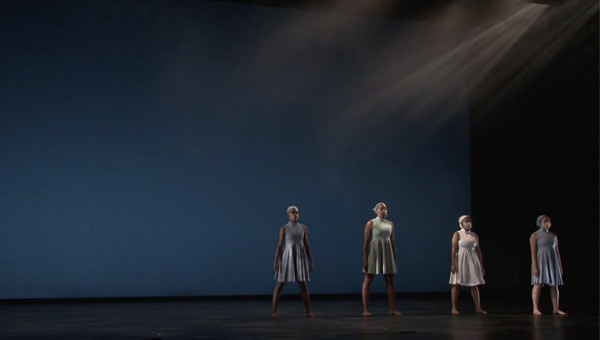 Joshua Gray The presence of political debate and activism at dining tables, conference rooms, and other traditionally apolitical spaces has burgeoned in recent history. The Black church has been one of these politically transformed spaces that have been impactful in promoting movements around political ideologies. The Black body is political, and so are all cultural and religious practices from that experience. This research uses ethnographic and choreographic practices to explore themes of embodied Blackness, relational power, and institutionally-bound socio-political obligations. This research considers the question: how do congregants within Black Religious Institutions identify with their role in the political landscape that has led to change in diplomacy, legislation, awareness and transparency, civic engagement, and rights expansion — even on a microscale. Through collecting and interpreting oral histories within Black Religious Institutions, these stories and interactions informed a new contemporary choreographic work and an inquiry into choreographic methodologies foregrounding Africanist movement expression and values. |
|
|
|
|
 Elyssa Kristine Marie Granados Lou Although an estimated 12 percent of Filipinos living in the U.S. suffer from psychological distress, Filipinos have the lowest reported rates of help-seeking behaviors among all Asian Americans (Martinez et al., 2010; Gong et al., 2003) This research assesses attitudes toward and need for mental health services among the Filipino community living in the U.S., as well as identifies the barriers to help-seeking behaviors that contribute to mental health disparities. Open-ended interviews, averaging one hour in duration, were conducted on Zoom with ten first-generation Filipinos living in the U.S., ranging in age from 22 to 57 years old. Five participants were men and the other five were women. The interviews were transcribed with the aid of a transcription service, removing identifying information, and were analyzed using a coding framework based on key themes identified from previous literature and during the interview process. Comparisons among interview response themes especially focused on the influence of age, gender, and age at immigration on attitudes toward mental health. Interpretations from this research may inform future community interventions to increase mental health service utilization among the Filipino community and support the mental health needs of future generations of Filipino immigrants. This work was funded, in part, through an Undergraduate Research Award from the UMBC Division of Undergraduate Academic Affairs. |
|
|
|
|
 Choreographing Intersectionality: A Compositional Exploration of the Challenges Black Women Face Kayla Massey As a Black Woman, I create work that reflects my life experiences. The purpose of my research was to highlight experiences commonly shared by Black women and show how they may impact one’s mental and emotional health. During my research, a theme emerged; insecurities. I analyzed insecurities typically experienced by young Black girls, myself included. One’s initial sense of self is formed at a time in life where you’re most vulnerable; where any negative remark can shift how you view yourself, no matter how untrue it is. My research project was a choreographed work that addressed common insecurities known to have been developed by many Black women during childhood. Many of which involved their physical features. As a result, Black women typically find themselves battling another level of self-consciousness that may develop as they enter adolescence and follow them into adulthood. Ironically, however, the same features that young Black girls are insecure about, are the same features that are objectified and fetishized in society, particularly by people of other ethnic groups. I understand the work I’ve created is merely a starting point. I anticipate revisiting this work for further exploration, while still celebrating who I have become throughout the process. This work was funded, in part, through an Undergraduate Research Award from the UMBC Division of Undergraduate Academic Affairs. |
|
|
|
|
 Anna Teather, Aidan Brown, Evan McRae Satyr is a two-dimensional Metroidvania-inspired game with an emphasis on storytelling and world-building. The playable character Pan, a young boy who is part deer and part human, becomes possessed by the goddess Reya and they must work together to take down an evil empire. The player can explore an open world, fight enemies, and unlock new powers as they learn more about the world and the mysterious beings that inhabit it. The game was made in Unity and combined digital animation with hand-drawn watercolor paintings to create a unique visual style. It was a challenge for the lead artist to create paintings and use Photoshop to convert them into Unity assets. Programmers learned how to create fun fighting mechanics as well as enemies with artificial intelligence, efficient dialogue systems, inventory and collectible items, and much more. The level design had to be carefully planned out to effectively utilize the player’s abilities and provide a fun challenge. The development of Satyr provided a great opportunity to gain experience in team-based game development, as well as learn how to overcome challenges and explore video games as an artistic medium. |
|
|
|
|
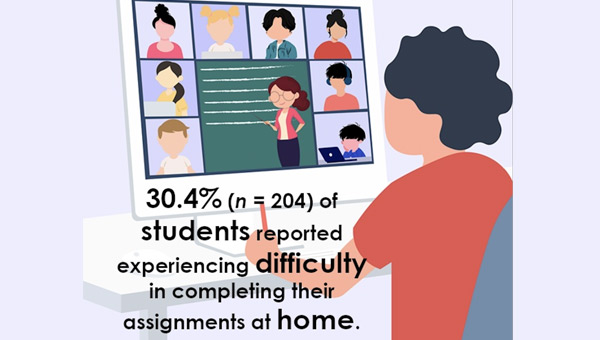 Ahmad Ndir The advent of the global pandemic in late 2019 had wide-ranging impacts across the world. Students, in particular, were a vulnerable population that faced a multitude of educational and personal challenges. The current study explores students’ reactions to individual and societal stressors due to COVID-19 and their relationship with sense of community and online learning in the year 2021. A total of 204 undergraduate students completed an online survey in May 2021 (49% cisgender men; 81% self-reported non-White). All students were enrolled at the University of Maryland, Baltimore County (UMBC) at the time of data collection. Participants were members of the Meyerhoff Scholars Program, a program designed to facilitate, enhance, and support the learning experience of underrepresented minority students in the STEM field. We hypothesize that: a) student sense of community will be negatively correlated with perceptions of COVID-19 disruption; that is, the higher students’ sense of community, the less they perceive disruption due to COVID-19, and b) students who reported lower disruptions associated with the COVID-19 pandemic will report positive perceptions of online learning. Correlation, t-tests, and mediation analyses will be conducted to test our hypotheses. |
|
|
|
|
 Ashley Pereira Immigrant students in grades K-12 face a host of barriers that can hinder academic success which school staff members can help to reduce. For this reason we have begun the development of an evidence-based educational game to be used as a training tool for K-12 train educators, administrators, and school counselors. To develop the game content, the student RA’s helped Dr. Kerri Evans and Dr. Jiyoon Lee to conduct both a systematic review and a qualitative content analysis of newspaper articles to identify factors that support or hinder the academic success of immigrant students. Both of these articles are in preparation for publication. Some emerging themes include the following: language acquisition, student acculturation, access to resources (on the micro, mezzo, and macro levels), dominant culture attitudes, and social support. Though this project is still in development, there are some important advancements that will contribute to producing this training tool. Identifying these factors will contribute to the growing body of resources that educators, administrators, and counselors can utilize to better support immigrant students and contribute to their success. This project was funded by the Hrabowski Innovation Fund Implementation and Research Award. |
|
|
|
|
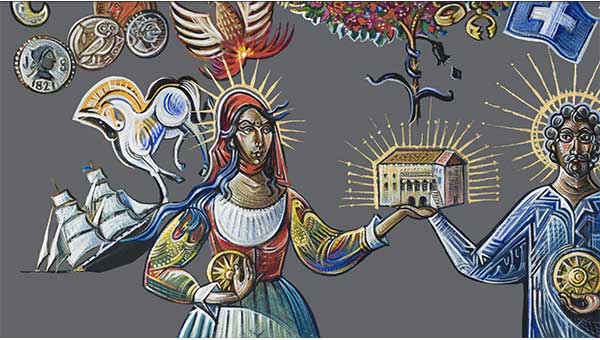 Bee Possidente “Animating Bouboulina” uses experimental animation to bring a painting to life, telling the story of Laskarina Bouboulina, a heroine of modern Greek history and commander of her own fleet during the Greek War of Independence (1821). The painting, commissioned by Dr. April Householder to be dedicated to the Bouboulina Museum in Spetses, Greece, depicts Bouboulina alongside her descendant and founder of the museum, Philip Demertzis-Bouboulis. It is the first painting of Bouboulina to be created by a female artist, and highlights her humanity and vulnerability in contrast with her idealized reputation, while also honoring the founding of the museum. Working closely with Dr. Householder, I have produced a collection of short animations that tell Bouboulina’s story, bringing to life various symbols featured in the painting that each represent a concept or important event in her life. Using Adobe Photoshop, Premier, and After Effects, I developed experimental methods of converting the original painting into animated motion, mimicking cut-paper animation with digital cutouts and creating sophisticated rigs that combined cutouts and hand-drawn pieces. This work explores the creative potential of the ongoing digitization of art and art history, and challenges the traditional narrative surrounding Bouboulina while simultaneously celebrating her achievements and legacy. This work was funded, in part, through an Undergraduate Research Award from the UMBC Division of Undergraduate Academic Affairs. |
|
|
|
|
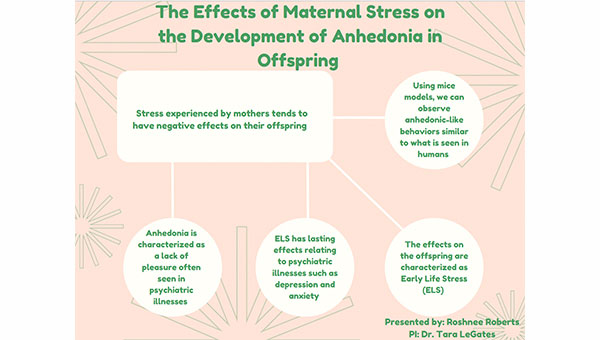 Roshnee Roberts Early Life Stress (ELS) has lasting effects on one’s life, including depression. To study the neurobiological effects of ELS, we used the limited bedding and nesting paradigm (LBN), where mice were raised with limited resources, modeling impoverished environments that have lasting effects on human health and wellness. Pregnant dams were placed in LBN or control environments before giving birth, and raised pups under those conditions. Upon weaning, mice were housed under standard conditions. We monitored maternal behavior from PD0-PD8. We examined the effects of LBN on stress outcomes in adolescence (PD45) and adulthood (PD90) by measuring serum corticosterone levels and depression-related behaviors using the Sucrose Preference and Social Interaction Tests. The hippocampus is a key brain region sensitive to stress and involved in depression, so we examined hippocampal-dependent learning using the Y-Maze. Preliminary data demonstrated no significant indications of stress or significant differences in depression-related behaviors or hippocampal-dependent learning. These results prevent us from concluding a relation between ELS and the onset of depression. In hopes of promoting early detection and prevention, we will repeat this experiment with a larger sample size to better understand the characterization of depressive symptoms in relation to early life stress. This work was funded, in part, through an Undergraduate Research Award from the UMBC Division of Undergraduate Academic Affairs. |
|
|
|
|
 Giuliana Weiss The purpose of this paper is to explore the changing perceptions of autism spectrum disorder in the United States throughout the 20th century and early 21st century, with a specific focus on how these perceptions have affected the lives and treatment of autistic individuals in America. From popular films like 1988’s Rain Man to Autism Speaks’ highly controversial short film “I am Autism,” the general public’s reaction to the condition we now refer to as autism spectrum disorder has been characterized by a lack of consistency and considerable confusion. By examining the complex relationship between the media and the public’s perception of autism, we can gain a more complete understanding of where we, as a society, need to improve in regards to our treatment of neurodiverse and autistic individuals. Autism is not an illness to be “cured,” and by debunking myths about autism, critically analyzing fear-mongering tactics used in reference to autism, and centering autistic voices in our narratives, we can better recognize the importance of the autistic community and its place within the neurodiversity rights movement as a whole. This work was funded, in part, through an Undergraduate Research Assistantship Support (URAS) Award from the UMBC Office of the Vice President for Research. |
|
4/21/2022